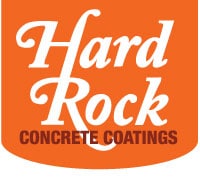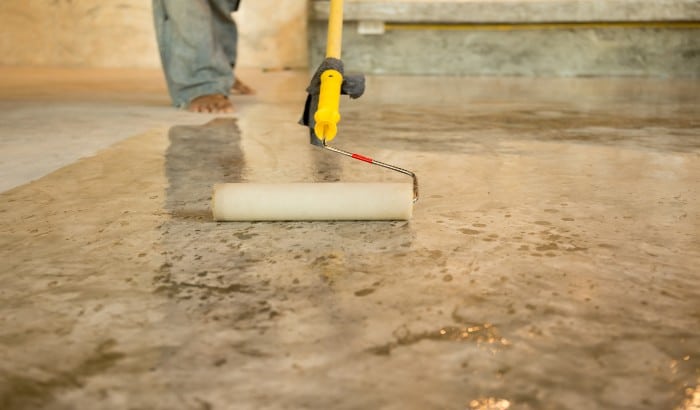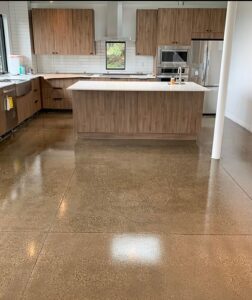Acid staining concrete can change the whole look of the material, changing the color to fit your taste and style.
In its natural form, concrete is usually some shade of gray.
Read on for a little primer on the basics of staining your concrete floors.
How Does it Work?
Staining with acid isn’t as dangerous a process as it may sound. The acid stain itself is made by a combination of water, acid (such as muriatic or hydrochloric), and inorganic metallic salts. When the acid soaks into the surface, a chemical reaction occurs with the lime (calcium hydroxide) in the material, permanently changing the color of the concrete. The acid etches the surface to a small degree, helping the metallic salts to penetrate more deeply. The stain is permanent and will not fade, peel away, or chip.
Similar to wood stain, the effect is translucent, and the color will vary depending on the condition, composition, and color of the concrete the stain is applied to. When the desired color is reached, a neutralizer must be used to stop the chemical reaction. Common materials to neutralize the reaction are ammonia, baking soda, or T.S.P. (trisodium phosphate) mixed with water.
What’s the Process?
Staining concrete with acid begins with a clean surface. All grease, dirt, or paint must first be removed, and the concrete allowed to dry thoroughly. Depending on the age of the concrete, different tools and methods may be required to get the substrate clean, such as a power washer, a wet concrete polisher, an orbital sander, etc. After taping off the area to prevent staining any unwanted areas like siding, trim, doors, or walls, the acid stain is prepared and then applied to the concrete with a sprayer.
The appearance of the stain can be manipulated by applying to wet concrete, brushing it with a broom, or adding layers for depth. Once the stain is dry, a neutralizer is applied to halt the chemical reaction and return the concrete to a basic pH state. Then the concrete is sealed, creating a permanent and resilient finish.
What Colors and Effects Can Be Created?
Acid staining concrete can produce a wide array of colors and effects. The colors are generally in the range of earth tones, like tans, browns, terra cottas, deep reds, greens, even turquoise. The stain can be applied in differing depths to mimic the appearance of natural stone and can even be added to stamped concrete to recreate higher-end stone surfaces. With no two concrete surfaces being the same, every stain will create a different result, and the process really becomes an art form.
Why Consider Staining Your Concrete Floors?
Concrete is a durable surface, and staining it is an affordable way to change the look without the cost of masonry or stonework. A stained concrete floor is also a chic modern trend in flooring these days, worthy of consideration. Another great feature is that concrete of any age can be stained, provided it is properly cleaned and prepared. With the right tools and equipment, it can be a do-it-yourself job, as well.
Hard Rock Concrete Coatings Can Help
If you’re not really the DIY type, however, you can leave acid staining your concrete to the experts. At Hard Rock Concrete Coatings, we have years of experience and all the equipment to perform the job quickly and professionally. We can help you achieve the beautiful color and effect you’re after to take your concrete from drab and gray to a work of art. Contact us today to get started on your concrete transformation! We serve Salt Lake City, Murray, West Jordan, and everywhere in between in Utah!




